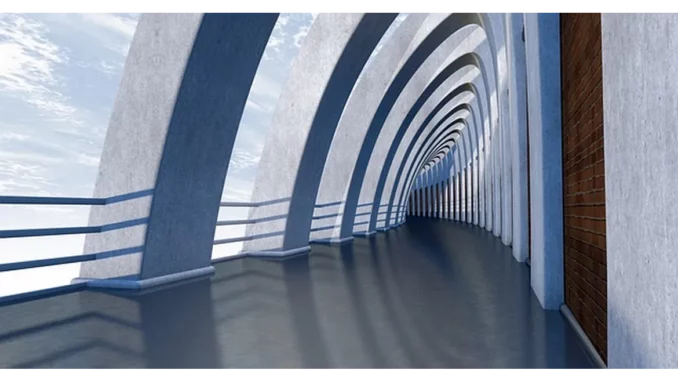
The global market for Low-E coated glass is on the brink of substantial growth, with projections suggesting it will achieve a market value of $46.96 billion by 2031. This remarkable expansion, characterised by a compound annual growth rate (CAGR) of 13.87%, highlights the increasing demand for energy-efficient and sustainable building materials across multiple industries. As the dynamics of this burgeoning market unfold, it becomes clear that a variety of factors are driving its expansion, including technological advancements, evolving consumer preferences, and regulatory pressures.
Successful low-energy building design hinges on careful planning. Focus360 Energy can help.
Low-E, or low-emissivity, coated glass is a specialised type of glass that features a microscopically thin, transparent coating designed to reflect infrared energy while allowing visible light to pass through. This unique attribute makes Low-E coated glass an exemplary choice for enhancing energy efficiency in buildings. By effectively minimising heat loss in winter and reducing heat gain in summer, it plays a significant role in maintaining indoor temperatures. Consequently, the use of Low-E coated glass can lead to a marked reduction in energy consumption for heating and cooling, thereby lowering utility bills and contributing to a smaller carbon footprint.
Several key drivers underpin the growth of the Low-E coated glass market. Technological advancements in coating technologies have markedly improved the performance and durability of Low-E coated glass. Manufacturers are committing substantial resources to research and development efforts aimed at creating products that offer superior thermal insulation and solar control, meeting the surging demand for energy-efficient solutions. Meanwhile, as consumer awareness of environmental issues grows, there is an increasing preference for sustainable building materials. Low-E coated glass, with its energy-saving properties and capacity to cut carbon emissions, is gaining popularity as a preferred choice for eco-friendly construction projects.
Governmental support further bolsters the market’s growth. Across the globe, governments are enacting stringent regulations and standards to promote energy efficiency and curtail greenhouse gas emissions. These policies are instrumental in driving the adoption of Low-E coated glass in both residential and commercial buildings. Additionally, rapid urbanisation and infrastructure development in emerging economies are generating a significant demand for modern building materials. Low-E coated glass is increasingly being utilised in skyscrapers, commercial complexes, and urban developments, where it enhances aesthetics, energy efficiency, and overall building performance.
The Low-E coated glass market is segmented by application, with key sectors including commercial buildings and home windows and doors. Each segment presents unique growth opportunities, driven by specific consumer needs and industry requirements. In commercial buildings, the demand for Low-E coated glass is fuelled by the necessity for energy-efficient solutions that enhance occupant comfort and reduce operating costs. The rise of smart buildings and the trend towards sustainable architecture further accelerate the growth of this segment. In the residential sector, homeowners are increasingly opting for Low-E coated glass to enhance energy efficiency and decrease utility bills. Heightened awareness of health and environmental issues is also contributing to the adoption of these solutions in everyday products.
Regionally, the global Low-E coated glass market displays diverse growth patterns, influenced by economic factors, consumer preferences, and regulatory environments. North America is a key player, driven by advanced technology adoption and significant investment in research and development. The presence of major manufacturers and a well-established infrastructure further supports market growth in this region. Europe, characterised by a growing emphasis on sustainability and regulatory compliance, is witnessing increased demand for eco-friendly Low-E coated glass products. Countries such as Germany and the United Kingdom are leading the charge in adopting these solutions, with a strong focus on innovation and quality. Meanwhile, the Asia-Pacific region is experiencing rapid industrialisation and urbanisation, particularly in countries like China and India, which are driving significant growth in the Low-E coated glass market. The region is also seeing increased investments in technology and infrastructure, enhancing market opportunities.
Despite the promising growth prospects, the Low-E coated glass market faces several challenges, including supply chain disruptions, fluctuating raw material prices, and regulatory hurdles. However, these challenges present opportunities for innovation and differentiation. Companies that invest in research and development, prioritise sustainability, and leverage data analytics to understand market trends will be well-positioned to capitalise on the growing demand for Low-E coated glass solutions.
In summary, the Low-E coated glass market is on a trajectory of robust growth, propelled by technological advancements, increasing consumer awareness, and regulatory support. As the global focus on sustainability and energy efficiency intensifies, Low-E coated glass is set to play a pivotal role in the future of building materials. For manufacturers, investors, and stakeholders, understanding the dynamics of this market is crucial in capturing growth opportunities and achieving long-term success.


Be the first to comment